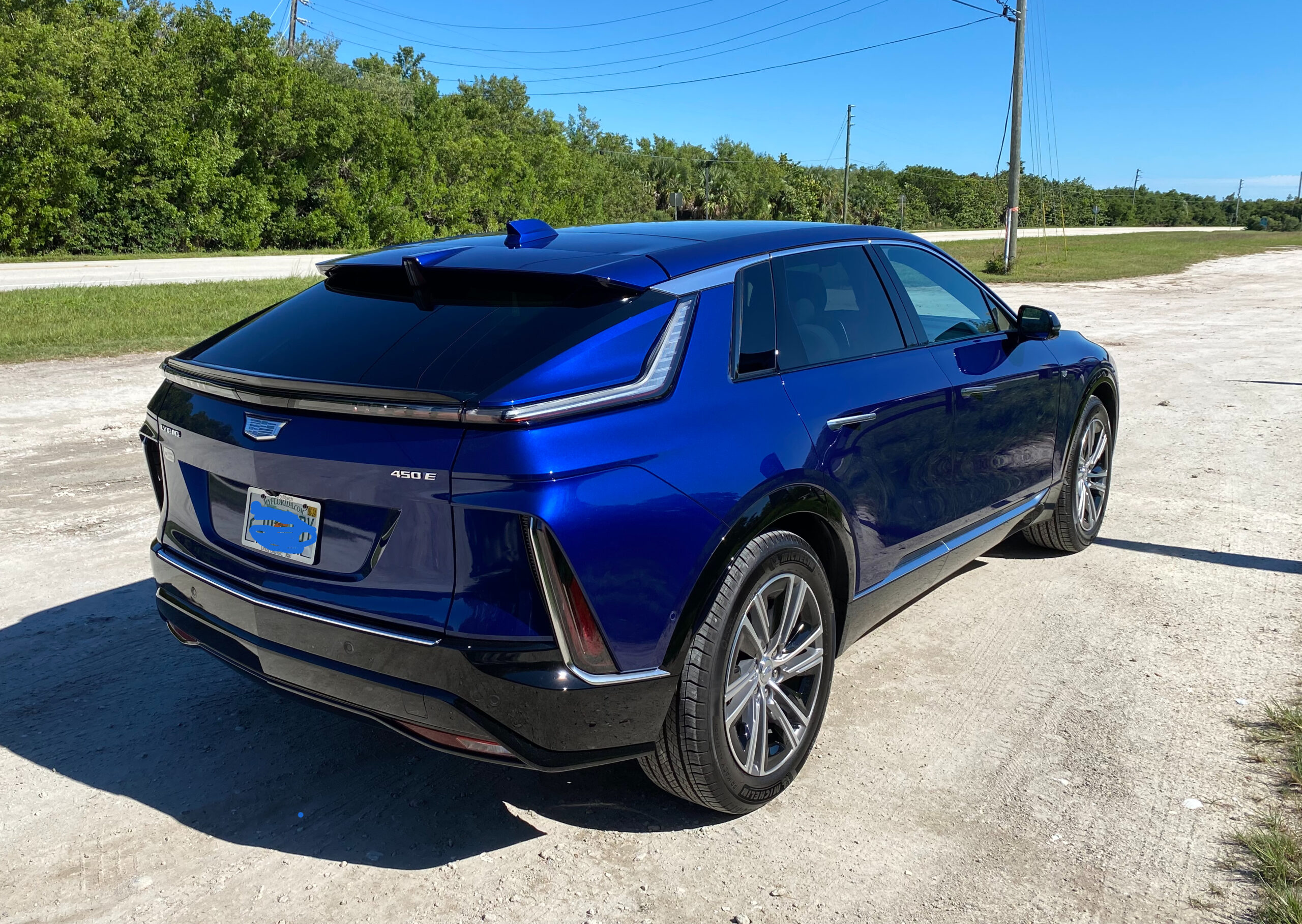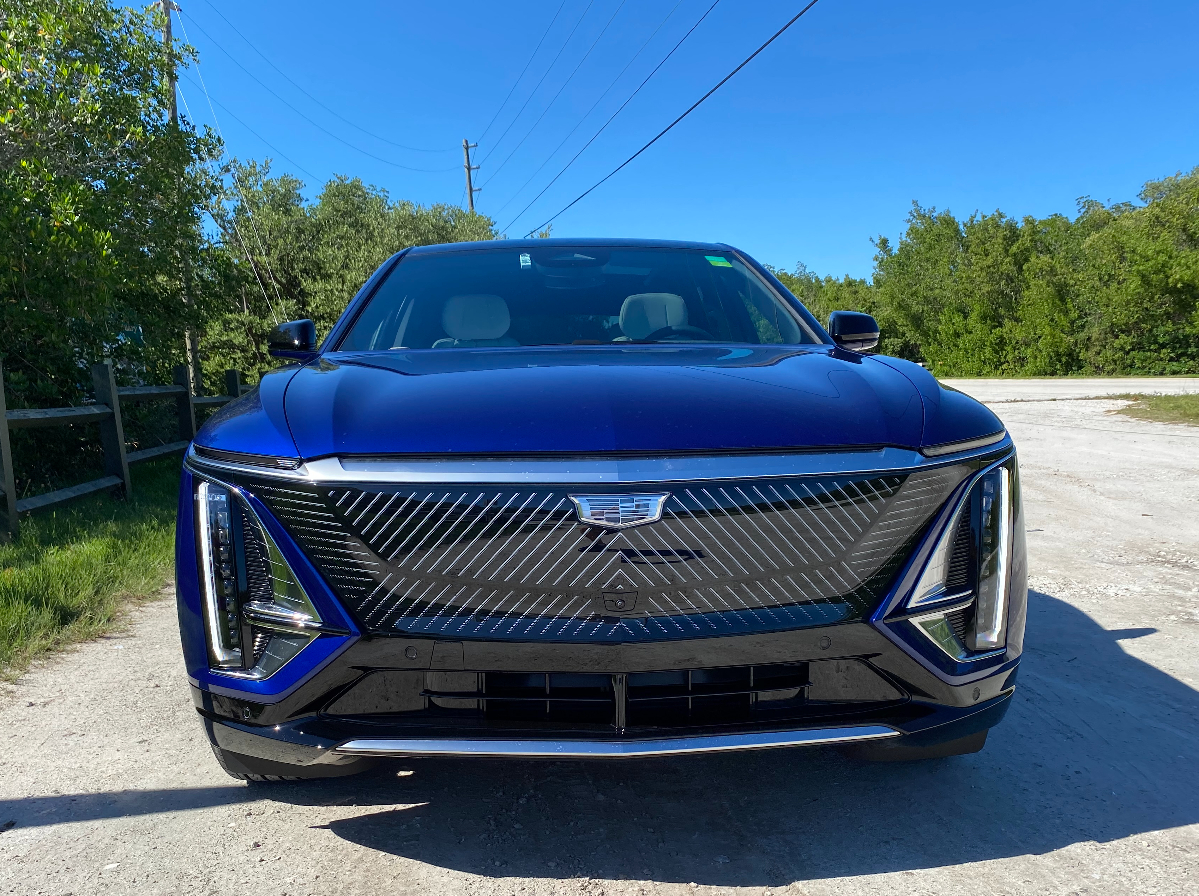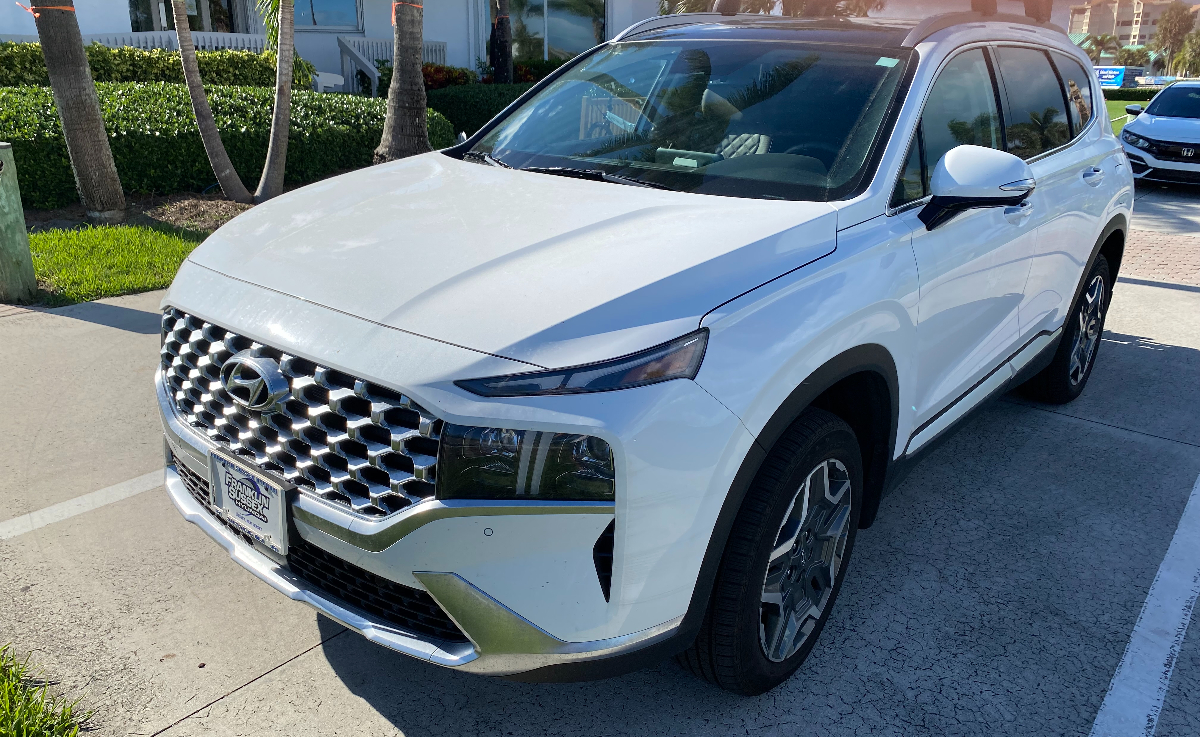Sign up for daily news updates from CleanTechnica on email. Or follow us on Google News!
Last year at this time, there were two EVs in my community — both Teslas. I owned one and a neighbor next door owned the other. This year, there are four. A Cadillac Lyriq and a Hyundai Santa Fe PHEV have been added to the neighborhood. Statistically, that means the pace of electric car adoption has doubled in the past year. Woo-hoo! I have driven both of these new cars and spent time with the owners to find out what they like about their cars and what they have learned since they started driving on electrons.
The Cadillac Lyriq Experience

Photo by Steve Hanley for CleanTechnica. All rights reserved.
My neighbor JD is a lifelong Cadillac driver. When I asked him last year when he ordered his Lyriq why he decided to buy the car, he said he trusted Cadillac to make an electric car that lived up to the company’s high standards. Ordering the car and getting it delivered were two very different things, however. As most readers are aware, the release of the Lyriq was pushed back a number of times as Cadillac worked to get it right before delivering the first cars to customers.
For the past year, JD waited patiently while his car was delayed multiple times. Then finally in September, it arrived. His Lyriq is a beauty, finished in a deep blue that shimmers in the Florida sunshine. He was bubbling with excitement when he handed me the keys. Inside, the Lyriq has all the luxury touches one expects in a Cadillac. It’s big and roomy with plenty of headroom, which is a good thing, since JD is 6′ 4″.
On the road, the Cadillac lived up to its promise. It is totally quiet, but leaps forward when you plant your right foot on the exhilerator. It’s the perfect ride for the business trips to Miami that JD takes regularly. When I asked him what he liked about the car, he told me, “I have learned that an electric car is just as powerful as a gasoline driven car, which was surprising to me. I was expecting a slower ride with not much power, but I was pleasantly surprised by the Lyriq.”
The central focus of owning an electric car is charging it. JD told me at first he took it to the dealer to charge, but soon found out that wasn’t the ideal situation, since the dealer is several miles north and most of his driving takes him south. “So I did some research and found a few charging stations closer to home. It was a learning process, but I am satisfied with the outcome. I get about 330 miles with an 85% charge. One time I charged to 95% and had 347 miles of range, which was plenty to drive to Miami and back home.”
[Note: The Lyriq is probably still calibrating its projected range software. EV owners know from experience that it takes a while for the software to learn the driving characteristics of the owner. There’s a reason these displays are often referred to as “guess-o-meters.” When I drove the car, it had only 604 miles on the odometer.]

Photo by Steve Hanley for CleanTechnica. All rights reserved.
“Now that I have discovered an efficient way to charge nearby, I do keep it at 89% SOC most of the time. I find the cost of electricity is about $20 a week or less. I am totally satisfied with the range and the savings. I really enjoy taking my wife for a drive along the shore in our Lyriq. It gives us space, luxury, comfort, power, and a sense of pride that we are playing a small part in helping our environment.
“I have no regrets after making this purchase. I have always appreciated the quality that Cadillac provides. Now my family is part of a pioneering move by Cadillac to provide a whole new way of traveling while consuming less fuel. This car is a sound investment, one that provides a deep sense of satisfaction to owners.”
The Hyundai Santa Fe PHEV Experience

Photo by Steve Hanley for CleanTechnica. All rights reserved.
My other neighbor is Ted. He took delivery of a Hyundai Santa Fe PHEV this summer. You might say the Santa Fe is at the opposite end of the electric car spectrum from the Lyriq. It has a 13.8 kWh battery and an electric-only range of around 30 miles. The Lyriq has a 102 kWh battery and an EPA estimated range of 312.
Some CleanTechnica readers pooh-pooh the idea of a plug-in hybrid, but here’s the point. Most Americans drive about 30 miles a day or less. Plug it in overnight like you do your iPhone and you have enough range for a normal day of driving the next morning. In theory, the owner could be driving on electrons instead of molecules most of the time. But when more range is needed, there’s no hunting for an EV charger and no issues with broken equipment or accessing a network. The gasoline engine takes over and does the job, at least until the tank runs dry.
My first impression of the Hyundai Santa Fe is that it’s a good looking car — clean, uncluttered lines that will still be appealing many years later. Hyundai and Kia have some of the best stylists in the business. The interior is remarkably comfortable and has a luxurious feel to it, not unlike the Lyriq in many respects. The ride is supple and smooth and the sound of the powertrain — whether in electric or gasoline mode — is almost undetectable from inside. There’s also a ton of room for people and stuff.
The Electric Car Charging Experience
Driving an electric car is different than driving a conventional car, primarily because charging is different than filling the tank and it takes some getting used to. It is fair to say that for those who can charge overnight at home, an electric car has a powerful advantage. Trips to the gas station are eliminated. When people ask “How long does it take to charge?” drivers can honestly say, “One minute. 30 seconds to plug in at night and 30 seconds to unplug in the morning.”
For many, there’s no need to hire an electrician to install an EV charger. Simply plug into a normal wall outlet and the car will replenish itself overnight. That explanation may be a little too glib, however. For those with no access to a wall outlet or charger at home, the situation is quite different and far less convenient. Most PHEVs don’t charge very fast. The Santa Fe is limited to 16 amps, which can take some of the joy out of the ownership experience if you are charging away from home.
In a very real sense, the availability of home charging and how fast an electric car can charge are often more important considerations than the size of the battery and EPA range estimates.
The Electric Car Spirit Of Adventure
My neighbors and I agree that owning an electric car is a bit like being a pioneer. We feel like those intrepid trailblazers who set off to prove that automobiles are an acceptable alternative to canal boats and horses. Yes, it’s true. There are some challenges associated with driving an electric car. Taking a trip does require some planning, although the Lyriq, like a Tesla, does display information about available chargers while driving.
The charging infrastructure along America’s highways and in its cities and towns is improving, thanks in large part to legislation signed by President Biden. Hilton intends to add EV chargers to its North American properties in the very near future, merchants are adding chargers to attract electric car buyers, and even Big Oil is joining the EV charging party. In North America, virtually all manufacturers have decided to adopt the Tesla NACS charging technology by 2025, a changeover that will eliminate much of the current confusion about what chargers work with which cars.
In the final analysis, no one will be driving soon in many coastal areas soon, as rising sea levels inundate oceanside communities. Electric car drivers are asked to make some small sacrifices, but that seems like a small price to pay for helping to reduce America’s carbon emissions.
The Lyriq and the Santa Fe PHEV are as different as night and day, but they both have a place in the EV revolution. They are intended for different drivers with different driving needs. The lesson here is, find an electric car that fits your budget and the way you use a vehicle. Then drive happy in your electric car while others are still stuck in the slow lane on the road to the future.
Have a tip for CleanTechnica? Want to advertise? Want to suggest a guest for our CleanTech Talk podcast? Contact us here.
EV Obsession Daily!
I don’t like paywalls. You don’t like paywalls. Who likes paywalls? Here at CleanTechnica, we implemented a limited paywall for a while, but it always felt wrong — and it was always tough to decide what we should put behind there. In theory, your most exclusive and best content goes behind a paywall. But then fewer people read it!! So, we’ve decided to completely nix paywalls here at CleanTechnica. But…
Thank you!
Community Solar Benefits & Growth
CleanTechnica uses affiliate links. See our policy here.




